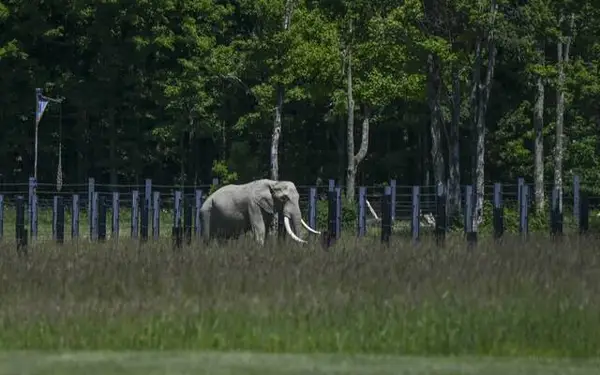The Pittsburgh Zoo & Aquarium’s International Conservation Center is the epitome of irony.
On what used to be a big game hunting preserve is now 1,000 acres of green space in Somerset County that’s home to endangered animals such as African elephants and, more recently, Bactrian camels and reindeer.
Clearly, no hunting is allowed.
And what used to be largely out of view to the public is becoming more visible through a growing community engagement program meant to educate about the plight of endangered animals and the zoo’s role in protecting and growing their populations.
“Some of the things we really tried to develop over the course of the last couple years is increasing our community engagement and actually offering opportunities for our communities to come and visit us,” said Ayeshah Al-Humaidhi, the center’s director.
In addition to the animals, the center has begun offering field trips as well as day and overnight summer camp opportunities for children in the area. They have developed a classroom for students to learn about the different wildlife they encounter at the center. In addition, the center will host seasonal events that will be open to the public.
Purchased in 2006, the conservation center began taking in elephants in 2008 — the first being Jack, a 48-year-old, 11,000-pound African elephant. He’s easily spotted in the fields because of his long ivory tusks, a feature that is rare among elephants in the wild because of poaching. He currently lives with three females and is the father of Zuri, Angeline and Victoria — all three now residents at the zoo’s Pittsburgh location.
The African elephant is listed as endangered by the World Wide Fund for Nature with a declining population. According to the conservation center’s website, their contribution to the species’ breeding has had a major impact on the North American population — Jack has fathered nearly 50% of the births on this continent over the past decade.
Al-Humaidhi said the conservatory’s first female elephant arrived in 2009. Bet, now 42, came from the Philadelphia Zoo to “retire” after her original zoo’s elephant program shut down. The two other female elephants living on the property have been there since 2012. Other elephants have circulated through the conservatory, going to and coming from zoos around the world.
“It’s really special to be able to see elephants like this,” Al-Humaidhi said. “It’s a really unique and amazing opportunity to see them in this way and in this environment.”
In the summer, the elephants are free to wander on more than 30 acres.
“They basically live in a big salad bowl,” said Jill Sampson, the center’s elephant curator.
Sampson said the center is working on making more space for the elephants so they can walk through the trees. In the winter, the elephants are escorted to an acre-long indoor facility filled with sand that includes enrichment activities to mirror actions they would take in the wild.
“Their dry season is our winter so it works out,” Al-Humaidhi said. “In the wild, there would be a season where there’s plentiful green and then they have a dry season. Obviously, in the winter there’s not a lot of grass to eat, and they’re fed primarily hay and they spend more time inside on the sand.
“It’s not exactly the same, but it kind of mimics the flow of the year.”
The pachyderms have welcomed some new neighbors in the past few months, including a Bactrian camel named Lorenzo, which arrived in November. Bactrian camels are critically endangered in the wild because of habitat loss. Lorenzo will get a new paddock mate in a female Bactrian camel, due to arrive soon. Four reindeer (two males and two females) will be added to the outdoor accommodations once they leave quarantine and their paddock is finished.
A majority of the land is in a conservation easement, where the center is able to build needed paddocks, trails or roads with the conservancy’s permission. Another 150 acres are in a high conservation status and will go undeveloped because of the type of vegetation that grows there, including hemlock groves.
“We’re going to continue to (collect data on the plant species on that land) for the season so we can get a good handle on exactly what we have out there so we can develop a plan for what we really want to conserve out there,” Al-Humaidhi said.
The center plans to add bison in the near future. The bison will receive a more hands-off style of care, as plans are to eventually release them back into the wild.
The center tries to conserve as much of its resources as possible, purifying all of its rain water to be reused at its health center. Even the manure produced by the animals is repurposed as fertilizer.





